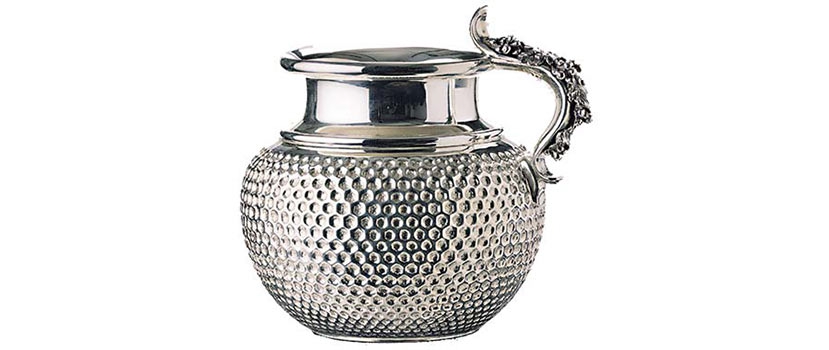BLOG
Redefining Wine: What Does It Mean To You?
Simon Woolf
Wine Culture

Sommeliers’ brains seem to fascinate scientists. Every few years, a new study pops up where somms are subjected to MRI scans whilst they blind taste and pontificate.
The latest peer reviewed paper was published earlier this year, titled "Sniffing out meaning: Chemosensory and semantic neural network changes in sommeliers." Then there’s the Italian-funded 2005 study "The appreciation of wine by sommeliers: a functional magnetic resonance study of sensory integration," or 2014’s "fMRI study on the influence of sommeliers' expertise on the integration of flavor."
The findings of these studies are all remarkably similar, at least to the layperson: sommeliers show enhanced brain activity whilst they are mid-sip. Fermented grape juice appears to turbocharge their cognitive processes, as they engage on a profound level with what is in the glass. It also causes neural activity that is not seen in the brain of a ‘normal’ consumer.
Why single out somms for these studies? Probably because they are the most visible manifestation of The Wine Expert, their superhuman abilities documented in films such as Somm and star potential celebrated in high-end restaurants the world over. But somms are far from being the only highly trained or knowledgeable group of professionals when it comes to wine. What might the brain activity of a wine sales rep, a connoisseur, an archaeologist or a historian look like in comparison?
If your brain’s reaction to wine depends on your profession or standpoint, your definition of the beverage probably differs too. Wine means something fundamentally different, depending on who you are. Wikipedia offers one of the most concise and neutral definitions: “Wine is an alcoholic drink made from fermented fruit.” It quite correctly doesn’t limit the definition just to fermented grapes. Most other dictionaries do, but then add the alternative that "wine can also be made from other fruits and plants."
This short definition is fine as far as it goes. But it gives no hint as to the breadth of the subject. If wine were just an alcoholic beverage or a means to get high, organisations like Wine Scholar Guild, the Court of Master Sommeliers or the Association of Wine Educators wouldn’t exist.

The Historian
Those fermented grapes assumed a deeper and more important role early in the history of civilisation. As ancient Greece expanded its empire across the Mediterranean, wine became one of its key trading tools. The Greeks realised that wine wasn’t just an attractive commodity to sell overseas, but also something that could be established in colonies such as southern Italy and then used to supply the domestic market.
Two factors singled wine out quite quickly, in comparison to other alcoholic beverages such as beer – whose history is equally long. Wine is site specific and cannot be produced everywhere. Significantly in the much cooler climate of two millennia ago, it was more or less impossible to grow grapes in much of Northern Europe. Secondly, wine in ancient Greece assumed status as the drink of the wealthy and educated, mostly due to its much higher cost when compared to beer.
If you are a historian, wine is a fascinating cultural object that helped to define ancient Greece and then the Roman empire. For archaeologists, there is a similar draw. Dr. Patrick McGovern’s digs in what is now the republic of Georgia have proven that the production and consumption of wine goes back at least 8,000 years. There is plenty more work to do: the true cradle of wine might be a little further east, in modern day Iran, or much further east in China – neither easy locations to undertake this kind of research.

The Theologist
Wine’s role in religion also dates back many millennia. The Egyptian Goddess Hathor, often represented as a cow, probably appeared almost five thousand years ago during the age of the Pyramids (roughly 2700 – 2200 BC). As an important deity, she was often honoured with sacrifices that included wine, and celebrated with an annual festival that centred around ritualistic drinking and inebriation. Dionysus, known later by the Romans as Bacchus, was God not just of winemaking, fruit and fertility, but also of festivity, religious ecstasy and ritual madness. Wine continued to be seen as a positive, uplifting and sacred liquid for a few millennia.
Different faiths have since grappled with its duality as both intoxicant and Godly wonder in various ways. Wine is writ large in the bible, not least at the last supper and the wedding at Cana. Most Christian sects still treat wine as something sacred and holy, to be used ritualistically as the sacrament. Islam rejected it early on, with Muhammad’s teachings in the 6th century CE expressly forbidding it and all other alcohol. Buddhists and Hindus generally also avoid booze, although their holy texts are less clear cut about whether it is invariably evil or not.
Notwithstanding the Islam world’s abstinence, to a theologist or a priest wine is a sacred substance – at least, if it’s the right colour. Jesus’s purpose in turning water into wine was supposedly to remind his devotees of his blood. So sacramental wine is invariably red. Purity is also important, with many Orthodox religions specifying that it must contain only grapes. The wine producing monks at Alaverdi Monastery in Kakheti, Georgia offer this as an explanation as to why their wines are unsulphured.

The Collector
Sacramental wine is rarely of anything more than very basic quality. After all, its use is largely symbolic. But even in the realms of serious wine lovers, the aim is not always simply to drink. The top strata of the fine wine world delight in ‘acquiring’ bottles so rare and/or valuable that few would dream of actually popping the cork. In their book Luxury Wine Marketing: The art and science of luxury wine branding, Peter Teung and Liz Thach MW offer this definition:
“Luxury wine is of the highest quality, coming from a special place on earth, has an element of scarcity, an elevated price, and provides a sense of privilege and pleasure to the owner.”
There is more than an implication here that “the owner” gets their satisfaction not from actually imbibing the contents of the bottle, but merely from knowing it is sat safely in their cellar or bank vault. Luxury wine per se is not necessarily rare – Dom Perignon’s production, for example, is in the millions of bottles per year - but its wealthy customer-based overlaps and interfaces with two other worlds where rarity is important: wine investment and wine collecting.
Wine investment, centred around the ‘blue chip’ staples of Bordeaux, Burgundy, Barolo and Champagne, has little to do with wine as a beverage. The owner may never set eyes on their purchase, which will spend its entire life locked away in a temperature-controlled warehouse, only to be transferred on paper to another nominal owner whenever its price is deemed to have ‘appreciated’ sufficiently. But at least the bottles are likely to be consumed in the end. The realm of the wine collector takes this perversion to the next level: bottles with immense historical value and age may not only never be opened, but it is also highly likely that they will be undrinkable as and when they are. Wine is no more immortal than we are.
The now infamous story of the Thomas Jefferson bottles – clarets from the mid-18th century, ‘discovered’ by Hardy Rodenstock and then sold to various hapless millionaires and billionaires between the 1980s and the 1990s – has been brilliantly told in Benjamin Wallace’s book The Billionaire’s Vinegar. Here, fabulously old wines with little to no chance of still being in condition were sold for staggering amounts of money to collectors obsessed about owning the seemingly impossible. Billionaire Bill Koch paid $400,000 for four of the bottles, and on discovering they were fakes then spent $35 million having the fraud investigated.
Whatever wine is in this context, it is far removed from that basic definition of “an alcoholic drink made from fermented fruit.” It has become an object that reflects desire, greed, wealth and status.

The Drinker
There are many more definitions of wine, and many more views on what it represents and what purpose it holds. To a writer, wine is filled with narrative and cultural richness that can be invoked to spice up tasting notes or copy. To a Master of Wine student, it is subject matter to be decoded, analysed and fretted over. To the sales rep, it is product to be reckoned in terms of relevance for its market, price competitiveness and popularity.
Perhaps it’s the educated but non-obsessive wine drinker who enjoys the sweet spot. For those of us who simply uncork and enjoy a glass, the nuances remain. Wine wears its origins on its sleeve – or more literally, the label. Perhaps the stated country or region reminds you of a wonderful holiday, a family member or a previous lifetime. The year has its meaning too. Open a decades old bottle of vintage port or Sauternes and you cannot fail to start thinking about the time when the wine was produced. This is wine as romance, as a window onto other ages, cultures and lands. It may only be fermented grape juice, but human history has imbued it with a complex patina that will never be erased.




